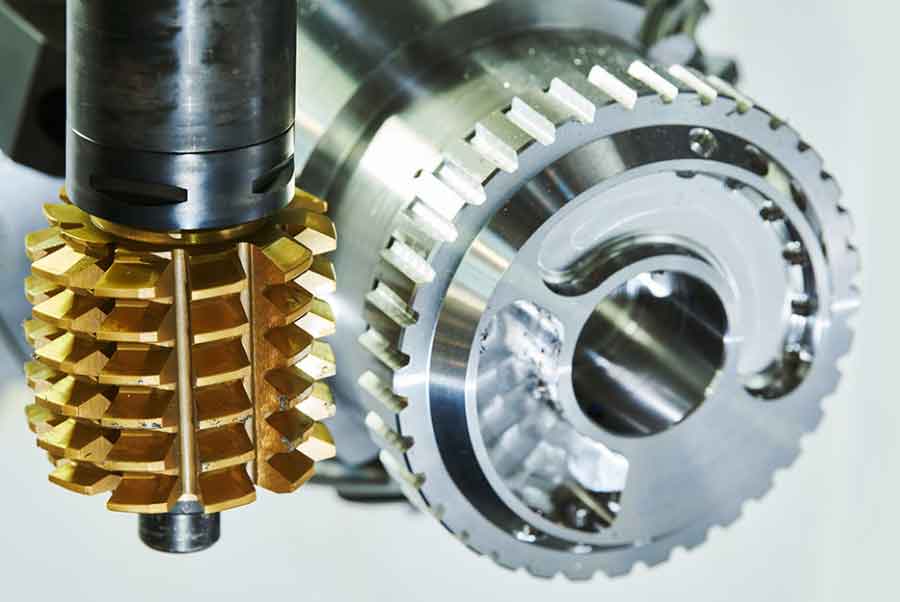
Gear hobbing is a complex and precise manufacturing process that involves the science of gear generation. It combines engineering principles, material science, and machining techniques to produce gears with accurate tooth profiles and optimized performance characteristics. This article explores the scientific aspects behind gear hobbing and how they contribute to the successful manufacturing of gears.
I. Gear Tooth Profiles and Geometry:
The science of gear hobbing begins with understanding gear tooth profiles and geometry. Gears typically have involute tooth profiles, which provide smooth and efficient power transmission. The involute shape is derived from the geometry of the hob and the relative motion between the hob and the gear blank. By precisely controlling the hob’s shape and the cutting parameters, the gear hobbing process ensures that the gear teeth accurately conform to the desired tooth profiles, resulting in proper tooth engagement and minimal tooth-to-tooth variations.
II. Material Selection and Properties:
The choice of material plays a crucial role in gear manufacturing. Gears are subjected to various forces, loads, and operating conditions, and the selected material must possess specific properties to withstand these demands. Factors such as hardness, strength, wear resistance, and toughness are considered when selecting the material for gears. The science of material science and engineering guides the selection of suitable gear materials to ensure optimal performance and longevity.
III. Cutting Forces and Tool Design:
The cutting forces exerted during gear hobbing significantly influence the machining process and the quality of the gears produced. Understanding the science behind cutting forces helps in optimizing the tool design and cutting parameters. Factors such as the helix angle, rake angle, and relief angle of the hob, as well as the feed rate and cutting speed, impact the cutting forces. By analyzing and balancing these forces, manufacturers can minimize tool wear, reduce vibrations, and improve the accuracy of the gear tooth profiles.
IV. Heat Generation and Cooling:
During gear hobbing, heat is generated due to the friction between the hob and the gear blank. The control and management of heat are critical to ensure the integrity of the gears and the longevity of the cutting tools. Proper cooling techniques, such as the use of cutting fluids or the application of dry cutting methods, help dissipate heat and maintain stable machining conditions. The science of heat transfer and thermal management guides the selection of cooling methods to prevent overheating, minimize thermal distortion, and maintain dimensional accuracy.
V. Lubrication and Surface Finish:
Lubrication is essential during gear hobbing to reduce friction, prevent wear, and improve surface finish. Lubricants aid in the chip evacuation process, reduce heat generation, and enhance the hob’s performance. The science of tribology (the study of friction, wear, and lubrication) plays a crucial role in selecting appropriate lubricants and optimizing their application. By carefully managing lubrication, manufacturers can achieve superior surface finish, reduce tool wear, and enhance the performance of the gears.
VI. Dimensional Accuracy and Metrology:
The science of metrology ensures the dimensional accuracy and quality of the gears produced through gear hobbing. Precision measurement tools, such as coordinate measuring machines (CMMs) and gear analyzers, are used to verify the gear tooth profiles, tooth spacing, and other critical dimensions. Statistical process control techniques are employed to monitor and control variations in the manufacturing process, ensuring that the gears meet the required specifications and adhere to tight tolerances.
Gear hobbing is a science-driven process that combines various disciplines to produce high-quality gears. Understanding gear tooth profiles, material properties, cutting forces, heat generation, lubrication, and metrology is crucial for achieving accurate gear tooth profiles, optimized performance, and reliability. By applying scientific principles and advanced manufacturing techniques, gear manufacturers can produce gears that meet the demands of diverse industries and applications.
